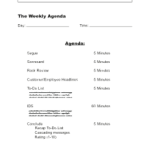

The overall safety record in commercial aviation remains strong, despite occasional high-profile incidents such as the recent Southwest Airlines inflight engine failure. The chances of fatality in an aviation accident are 1 in 9,821, while in an automobile it’s 1 in 114!
There is a simple explanation for the high success rate in aviation: great processes, solid training/certification and an obsession towards clarity of responsibilities.
Who’s responsible and for what?
Let’s take Air Traffic Controllers for example. Each is responsible for a sector of traffic. When a flight is about to leave their sector, they hand-off to the controller in the next sector. Their primary responsibility is to maintain safe separation between aircrafts and seamlessly allow for a safe arrival at the flight destination. They are trained, tested and certified around these specific responsibilities.
Pilots must also be clear about their roles, especially with more than one qualified pilot onboard. Only one pilot is the PIC (Pilot in Command) and the Captain is always PIC on commercial flights, even if he/she is not flying the airplane.
It’s not always straight forward in general aviation, since there may be more than one qualified pilot on board but no one is designated as captain. In this case, the pilots must agree on who is ultimately responsible for the safety of the flight before initiating takeoff.
Do your employees have clear roles and responsibilities?
It’s no different in your business. Perhaps the CEO is the Pilot in Command, but what are the specific responsibilities of the “crew?” Clear accountability with metrics will help build a healthy ownership culture within your organization and free people to take bold initiatives to solve problems.
The Accountability Chart is your prime tool to help achieve the level of clarity needed to build awareness around everyone’s responsibilities. This tool identifies the opportunities and challenges around building a strong and successful organization.
Expectations around responsibilities may seem clear, but chances are they’re not as crystal as you think. A good test is to identify an issue in your organization and then clearly confirm which function on your accountability chart “owns” it. If the answer is not straight forward, then you’re not quite there!
Your relentless pursuit of clear roles and responsibilities in your organization will help you achieve a success rate similar to that of commercial aviation and remain strong despite the occasional incident.
If your company needs help in defining roles and responsibilities for your employees contact us at www.bluecoreleadership.com.












































11710 Plaza America Drive, Suite 2000 Reston, VA 20190
703.278.CORE (2673)
Leave a Reply